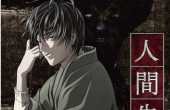Patrick Nuetzman
Hey, y'all! My name is Patrick, and I'm currently a graduating Asian Studies major (Japan Studies concentrator) at St. Olaf College.
Junior Contributor II
- Lurker
- ?
- Articles
1 - Featured
1 - Comments
12
- Ext. Comments
9 - Processed
0 - Revisions
0
- Topics
0 - Topics Taken
0 - Notes
0
- Topics Proc.
0 - Topics Rev.
0
- Points
125 - Rank
X - Score
68
Latest Articles
Latest Comments
| The Popularity of ‘Hideyoshi’: the Character that is 'Neither Male nor Female’ | |
For me, Butters should have topped the list– though in more recent seasons, you could probably argue that he is a main character, with Randy holding similar regard. Butters is easily the most tragic character in the entirety of South Park. Having to deal with massacre, ridicule, religious hate, exclusion, and Cartman’s sociopathic schemes on a weekly basis. All the kid wants is to have a good time; he’s the pinnacle of innocence and is constantly having that ripped away from him. | South Park: 10 Supporting Characters to Consider |
Just realized that I listed a bunch of anime instead of manga. Still worth examining these works, though. | Trauma and its Representation in Manga |
Some other traumatic experiences in manga to address would be Kamina’s death in Gurren Lagann and its impact on Simon, Yoko, and Kittan; the deaths of Lelouch’s mother, Shirley’s father, Shirley, Euphemia, and Rolo in Code Geass; and the merciless beatings of Paranoia Agent and how they structure society from then on. | Trauma and its Representation in Manga |
I agree with all of your points, save introducing the Masters of Evil. | Avengers: Age of Ultron and the 10 Gems That Can Make it Shine |
Between Dazai and Akutagawa’s biographies, I don’t know which is more depressing. | The Evolution of "No Longer Human" |
While I agree that the anime did not bring light to every little tangential nook and cranny the novel had to offer, it instead focused more on just the anti-hero. This gave a certain clarity to the audience that Madhouse was trying to reach. | The Evolution of "No Longer Human" |
Definitely! Dazai would have reveled in the Camus’ existentialist writings– had he lived to read them, that is. | The Evolution of "No Longer Human" |

While these androgynous characters do not play a major role in anime, video games are pushing further for more characters that can be universally identified with. A good example of this is Leo of the Tekken series. When introduced in Tekken 6, Leo claimed only gender-neutral pronouns; could utilize both male and female moves, costumes, and items; and never wore costumes that revealed the chest. The Tekken designers claimed that they wanted everyone to ignore Leo’s “true gender” in order to have this character as a bridge between all gender identities.